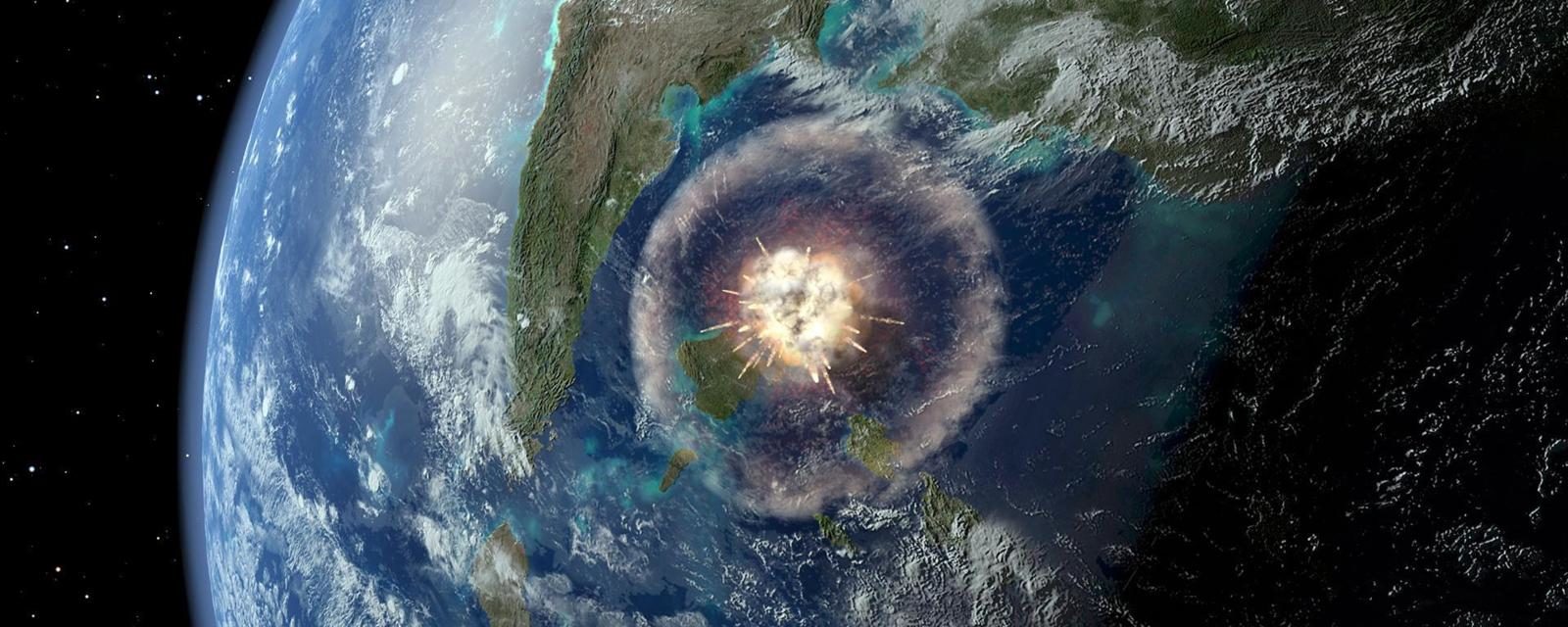
This is Earth after a six-mile-wide asteroid smashed into it 66 million years ago.
"In the course of minutes to hours it went from this lush, vibrant world to just absolute silence and nothing," says Daniel Durda, a planetary scientist at the Southwest Research Institute in Colorado. "Especially in the thousands of square miles around the impact site, the slate was just wiped clean."
Much like putting in all the edge pieces of a jigsaw, scientists have outlined the lasting impacts of the meteor strike. It claimed the lives of more than three-quarters of the animal and plant species on Earth. The most famous casualties were the dinosaurs - although in fact many of them survived in the form of birds.
But filling in the details, especially what followed the impact and what enabled some life to survive, has proved more challenging.
The idea that the dinosaurs were wiped out by an asteroid strike was first proposed in 1980. At the time it was a controversial suggestion.
Then in 1991, geologists discovered the impact site: a crater 180km (110 miles) across on Mexico's Yucatán Peninsula. They named it Chicxulub, after the nearest town.
The crater was far from obvious, because it is underground. The northern half is also offshore, buried under 600m (660 yards) of ocean sediments.
So in April 2016, researchers began drilling nearly a mile down into the offshore section of the crater, to extract core samples 10 feet (3m) long. The team will analyse these extracts for changes in rock type, tiny fossils and perhaps even DNA trapped in the rock.
"We will get to look at what is likely to be a sterile ocean at ground zero right after the impact, and then we can watch life come back," says Sean Gulick of the University of Texas Institute for Geophysics, who is involved in the drilling.
It has been possible to figure certain things out without drilling into the crater.
In particular, given the dimensions of the crater, scientists have calculated how much energy the impact delivered.
Using this information Durda, with David Kring of the Lunar and Planetary Institute in Texas, simulated the fine details of the collision - and predicted what knock-on events it might have set off. Researchers have then been able to test this scenario with the fossil record to see if the model's predictions actually took place.
"All of those kinds of calculations have been laboriously toiled over," says palaeobotanist Kirk Johnson, a director of the Smithsonian National Museum of Natural History. "You can build a scenario where you can walk your way through the moment of impact, the last second of the Cretaceous Period, and then step yourself forward over the minutes, hours, days, months, and years after the event."
These studies tell a cataclysmic story.
The asteroid seared through the sky at more than 40 times the speed of sound and slammed into the Earth's crust. It produced an explosion equivalent to 100 trillion tons of TNT, roughly seven billion times as powerful as the Hiroshima bomb.
The plunge into the Earth's crust sent shock waves across the landscape.
Tsunamis between 100 and 300m high surged across the Gulf of Mexico and ripped up the seafloor down to depths of 500m. Magnitude-10 earthquakes destroyed the coastline and the radiating air blast flattened any forests within thousands of kilometres. Finally, tons of rock showered from the sky, burying any remaining life.
"Basically you are looking at a 10km-diameter bullet," Johnson says. "The physics is just extraordinary. You get just this incredible explosion, incredible earthquakes, incredible tsunamis, and then anywhere within several hundred kilometres of the site you have building-size blocks raining down on the landscape."
But these regional impacts alone did not cause the global mass extinction.
When the asteroid hit, it vaporised a large chunk of the Earth's crust. The debris rose like a fiery plume above the impact site, punching its way through the sky.
"It was just this big, expanding plasma ball that penetrated out of the top of the atmosphere, into space," Durda says.
The plume spread east and west until it enveloped the entire Earth. Then, still gravitationally bound to the planet, it rained back down into the atmosphere.
As it cooled, it condensed into trillions of quarter-millimetre droplets of glass. These shot down towards the Earth's surface at about the same entry speed as the space shuttle, heating the upper atmosphere so much that, in some places, land plants caught fire.
"The incandescent heat from re-entering ejecta created a broiler-oven effect on the planet," Johnson says. "So then you just have a furnace."
The soot from fires, combined with the dust from the impact, blocked out the Sun's rays and plunged Earth into a long, dark, wintry spell.
Over the next few months, the tiny particles drizzled back down to the ground, cloaking the entire planet with a layer of asteroid dust. Nowadays palaeontologists can see this layer preserved in the fossil record. It marks the "Cretaceous-Paleogene (K-Pg) Boundary", a turning point in the history of our planet.
In 2015, Johnson hiked 110 miles of exposed K-Pg Boundary layer in North Dakota, seeking out fossils on the way. "If you look down from the layer we were seeing dinosaurs all over the place," he says. "But if you looked up, no dinosaurs."
In North America, before the Chicxulub impact, the fossil record paints a picture of lush canopied forests interwoven with swamps and rivers, and a thick understory of ferns, aquatic plants and flowering shrubs.
The climate was warmer than it is now. No ice covered the poles, and some dinosaurs walked the lands as far north as Alaska and as far south as the Seymour Islands of Antarctica.
"You've got a world as biologically rich and diverse as everything we see around us today," Durda says. "But afterward, especially around the impact site, the environment was lunar-like. Just desolate and barren."
Scientists have deduced the asteroid's effects by studying the K-Pg layer, which they have found in 300 locations around the world.
"Unlike almost any other geologic process, the asteroid impact happened in an instant. It wasn't like a hundred million years or ten millions years. It was a moment," Johnson says. "Once we have fingerprinted the layer back to the debris from the asteroid impact crater, we can do the below and above, before and after, comparison."
Close to the impact site, animals and plants died from either the scorching temperatures, the ripping winds, the earthquakes, the tsunamis or the boulders that rained from the sky. Further away, even on the other side of the world, species suffered from knock-on effects like the lack of sunlight.
In regions where the fires had not first destroyed habitats, the extreme heat killed food for animals and acid rain polluted the water supplies. Worse still, the debris in the air rendered Earth's surface potentially as dark as a lightless cave, shutting down photosynthesis and collapsing food chains.
"With all the vegetation gone, the herbivores have nothing to eat. If the herbivores die then the carnivores have nothing to eat," says Kring. "It became a serious challenge to survive."
"On land, everything's burned and dead, and everything big is starving to death," Johnson says.
The fossil data, where it is available, reveals that nothing larger than a raccoon survived. Such small-bodied species were more likely to survive because they lived in greater numbers, ate less, and could reproduce and adapt faster.
Freshwater ecosystems seemed to fare better than those on land. However in the ocean, entire food chains collapsed.
While the long winter halted photosynthesis, its impacts would have been greater in the hemisphere that was entering the growing season. "If you're in the beginning of the northern hemisphere summer, for instance, and you turn the lights off during the growing season, then that could be problematic," Johnson says.
The fossil record indicates that northernmost North America and Europe fared best after the inferno. That suggests that the northern hemisphere had just begun its winter shutdown when the asteroid struck.
But even in the worst-affected areas, life soon came creeping back.
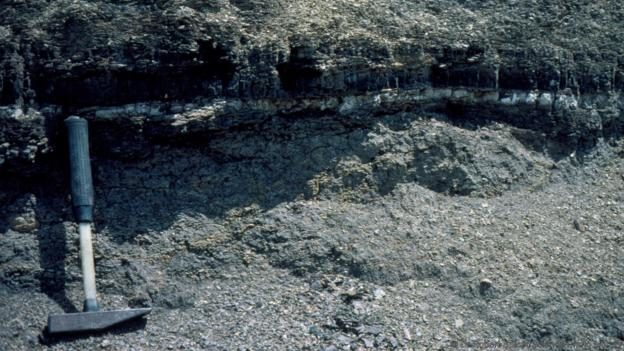
The recovery took a long time. It took hundreds if not thousands of years for ecosystems to rebuild. Scientists suggest that, in the oceans, it took three million years for the flux of organic material to return to normal.
Much like after a forest fire today, opportunistic ferns quickly repopulated the scorched landscapes. In ecosystems that escaped the fern frenzy, blooms of algae and mosses dominated.
In areas that escaped the worst of the devastation, some species survived to repopulate the planet. In the oceans, sharks, crocodilians and certain fish made it through to the other side.
The loss of the dinosaurs meant that new ecological niches opened up. "It's the radiation of mammalian species into those empty ecological niches that is responsible for the full diversity of mammalian life we see in today's world," Durda says.
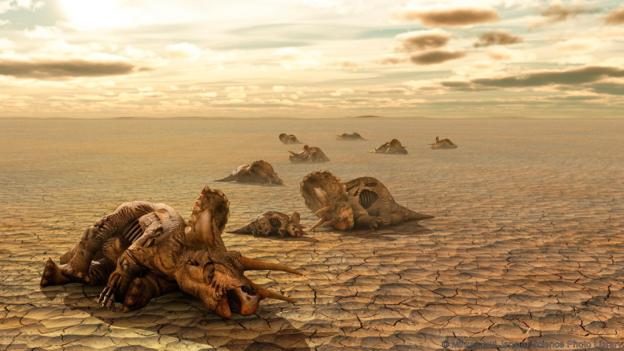
"We'll have much better analysis of the actual inside of the crater," Johnson says. "They'll learn a lot about the distribution of energy, and fundamentally what happens to Earth when it gets whacked by something that big."
On top of that, they will examine the veins of minerals and fractures in the rock cores to see what might have lived there. In this way, the drilling could help us understand how life recovered.
"By watching life come back, you can answer some questions," Gulick says. "Who comes back first? Is it the specialist? The generalist? What kind of evolutionary diversity happened and how quickly?"
Although many species and individual organisms perished, other forms of life thrived in their absence. It is a dual pattern of disaster and opportunity that has repeated itself after many impact events in Earth's history.
In particular, it is likely that if the asteroid had not struck Earth 66 million years ago, the course of evolution would have been radically different - and humans would not have evolved. "Sometimes, when I wax a little too poetically, I will say that the Chicxulub crater is the crucible of human evolution," says Kring.
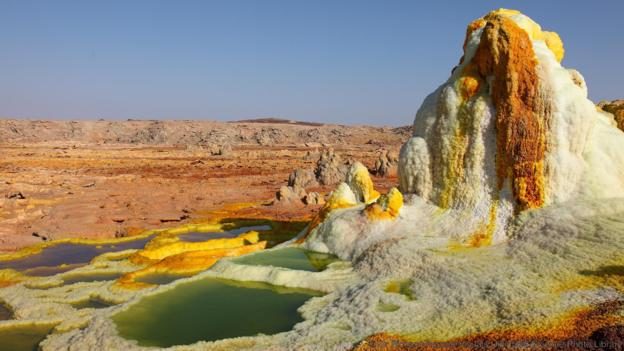
When the asteroid hit, the intense heat drove hydrothermal activity within the Chicxulub crater that may have lasted for 100,000 years.
This could have allowed thermophiles and hyperthermophiles - exotic single-celled organisms that thrive in hot, chemically-enriched environments - to make their homes inside the crater. The drilling project will test this idea.
From its birth up until around 3.9 billion years ago, the Earth was bombarded by asteroids and other debris. In 2000, Kring proposed that these impacts created underground hydrothermal systems, just like the ones that probably formed at Chicxulub.
These hot, chemical-rich, wet places could have given rise to the first life forms. If that is true, the heat-tolerant hyperthermophiles were the first life forms on Earth.
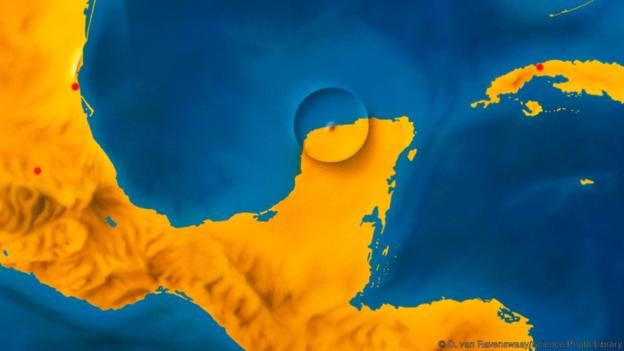
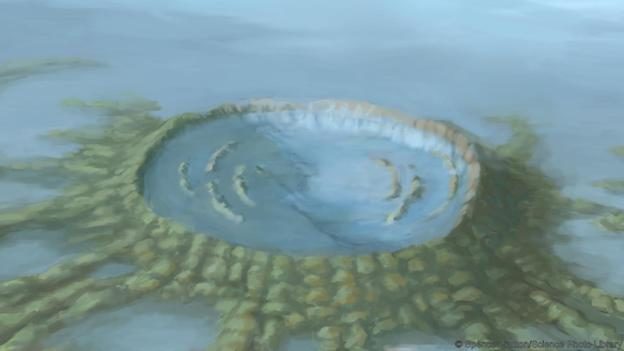
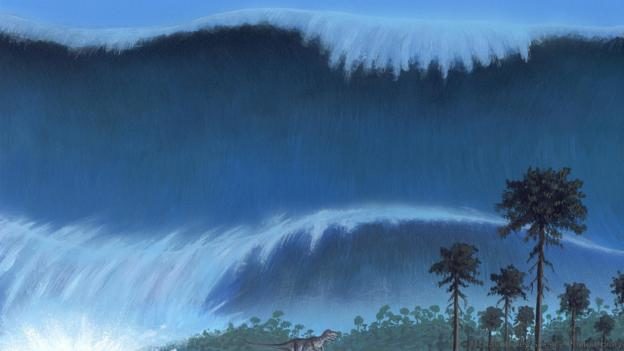
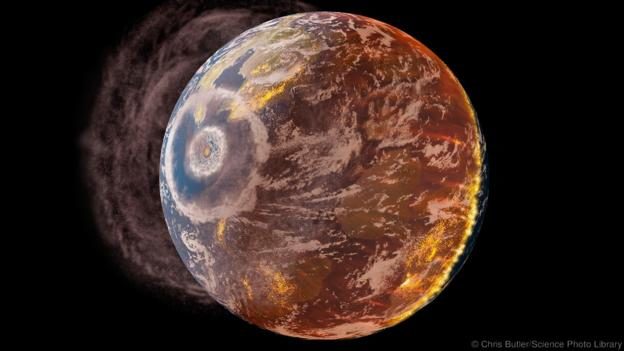
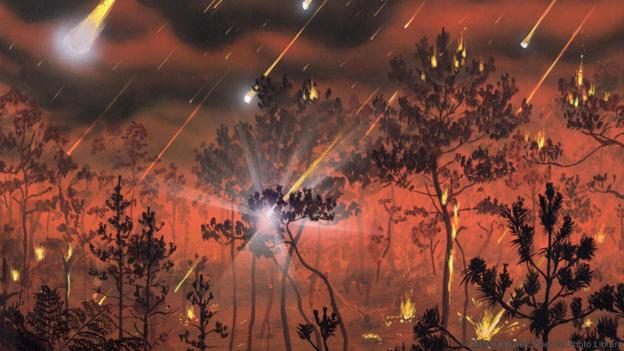
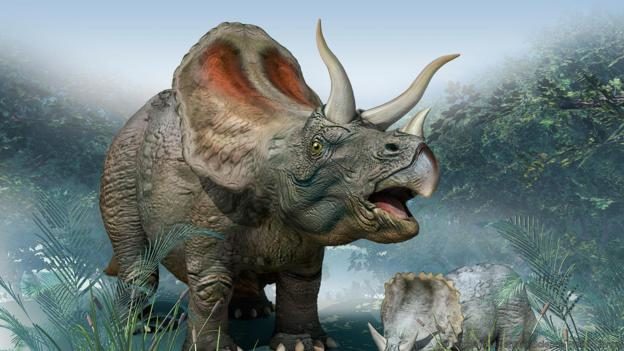
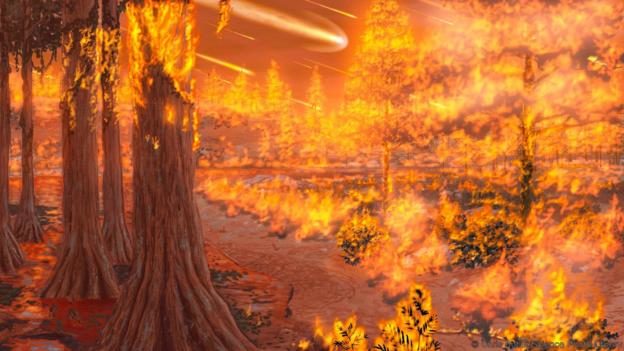
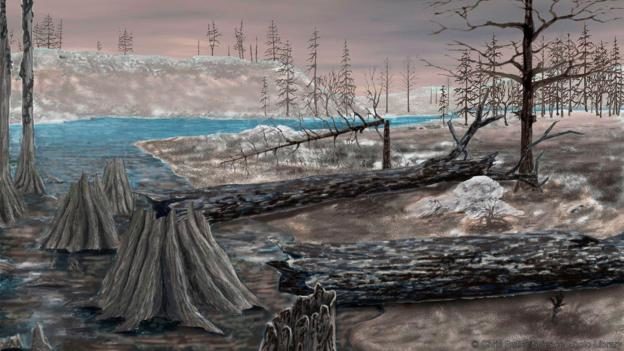



510.1 million km² = 196.951 million miles² - [Link]
Under the assumption of being circular, the area of a 6 mile-wide asteroid = 28.274 miles² - [Link]
The ratio of Earth’s area to the area of asteroid is 6969:1, area of Earth/area of asteroid.
“It claimed the lives of more than three-quarters of the animal and plant species on Earth. The most famous casualties were the dinosaurs.”
Of course I do not know the velocity of the asteroid. But what velocity will the asteroid, 6969th the size of Earth, have been required to travel, and what strike angle will the said asteroid have been required to make with the surface of Earth, to effect the amount of damage described? There are other factors I will not enter.
Will someone be kind enough to appropriately advise me.
Shalom